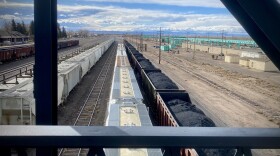-
Researchers are trying to find alternative uses for coal, like construction and farming. Proving that technology works is no small feat, but perhaps the trickier task is shifting how some people feel about coal.
-
Researchers at the University of Wyoming have been studying how well plants thrive outside their preferred ecosystems. They planted gardens at various elevations to see which species would survive with a little help moving.
-
A consumer advocacy group is asking top insurance companies to adopt a list of nine protections aimed at increased transparency and fairness.
-
New research shows that mountain regions around the world are warming faster than the lowlands below them. Scientists say that could have big consequences for the Mountain West, where communities rely on snow and ice for their water supply.
-
At a conference of western governors in Arizona last week, the region's energy future dominated the conversion as populations and the AI data center industry continue to grow and drive up demand.
-
New research shows that many rural roads in the Mountain West may be more vulnerable to flooding than people realize. That’s because the culverts and stream crossings underneath them aren’t built to handle today’s storms.
-
In addition to a lack of snow, warmer temperatures have thwarted snowmaking.
-
A new study in the journal Science suggests rivers in the arid American West may be doing something unexpected: absorbing carbon dioxide from the atmosphere. The finding could reshape how scientists model climate change.
-
Data analyzed by the advocacy group Grassroots Wildland Firefighters shows that prescribed fires and other hazardous fuel reduction efforts have fallen by nearly 40% across the West this year.
-
Wildfires have grown substantially in size in recent decades, but they’re also burning much more intensely, with high severity areas growing much faster than fires overall. New research projects additional significant jumps in the scale of wildfires that kill most trees unless major management measures - like prescribed fire - are carried out.
© 2025 Wyoming Public Media
800-729-5897 | 307-766-4240
Wyoming Public Media is a service of the University of Wyoming
800-729-5897 | 307-766-4240
Wyoming Public Media is a service of the University of Wyoming

Play Live Radio
Next Up:
0:00
0:00
Available On Air Stations











